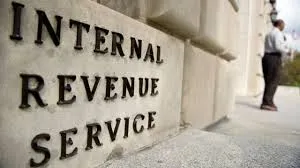The Employee Plans Compliance Unit (EPCU) conducted a Voluntary Compliance Follow-Up project to determine if plan sponsors completed the corrections they agreed to in their Voluntary Correction Program (VCP) compliance statements.

When you find errors in your plan’s form or operation, the Internal Revenue Service (“IRS”) encourage you to fix them using one of their correction programs under the Employee Plans Compliance Resolution System (EPCRS).
If you use VCP and the IRS accepts your submission, you will receive an IRS compliance statement that outlines:
- plan failures you identified,
- proposed corrections including revisions to administrative procedures, and
- time allowed to complete the actions.
Project goals
The IRS reviewed compliance statements issued on plan document and operational qualification failures to learn if sponsors:
- made the corrections listed in their compliance statements,
- corrected the failures within 150 days, and
- revised their administrative procedures.
Project results
The IRS found the majority of sponsors properly completed the proposed corrections. But, a significant percent of sponsors didn’t meet the terms of the compliance statement because they didn’t:
- completely correct within the 150-days, or
- implement changes to administrative procedures.
However, due to the nature of this compliance project the IRS didn’t ask those sponsors to refile with VCP. In addition to reviewing the VCP corrections, the IRS also found some sponsors that needed to file an amended or delinquent Form 5500 return.
Correction
Complete the proposed corrections in your compliance statement within the 150-day deadline. For example, you made plan loans to married participants without obtaining spousal consent. Your compliance statement says you agree to secure spousal consent for those distributions and update your qualified joint and survivor administrative procedures to include language for the spouse’s signature on loan applications. You need to prepare the paperwork, contact the affected individuals, obtain the spousal consents, revise your loan documents and complete all necessary administrative actions within 150 days of the compliance statement’s date.
If the plan sponsor doesn’t complete the corrective actions within 150 days of the compliance statement’s date, the compliance statement is invalid. The sponsor will have to file another VCP submission, along with a compliance fee, and identify that they didn’t complete the corrections within 150 days from the date the compliance statement was issued.
If you need additional time to complete the proposed corrections in your compliance statement, request an extension in writing before the 150-day correction period expires. Submit your request for an extension of the correction to the agent that worked on your submission and issued the compliance statement. You’ll need to explain why you need more time, what steps you’ve taken so far and the extension of time requested.
In addition, if you find errors on the information reported on your Form 5500 return, file an amended Form 5500 as soon as possible to avoid additional penalties and interest.If you haven’t filed your Form 5500, IRS and Department of Labor (DOL) have programs to help you catch up with late annual reports.
If you find other errors in your plan’s form or operation, fix them using EPCRS. Because a compliance check isn’t an examination, you can still correct certain form and operational mistakes by using EPCRS.
Prevention
Your VCP submission included steps you agreed to take to ensure that the failures you disclosed don’t happen again. Review your compliance statement to make sure that you have implemented those changes. You may also want to consult your benefits professional to ensure your administrative procedures prevent errors from occurring in your retirement plan. To make sure that you’ve corrected your errors within 150 days, keep track of the 150 days on a calendar and communicate with the administrators who are helping you to correct your plan errors during this period.
Additional resources
The IRS has many resources to help you keep your retirement plan in compliance. Their resources can help you find and fix errors and avoid making them in the future.


